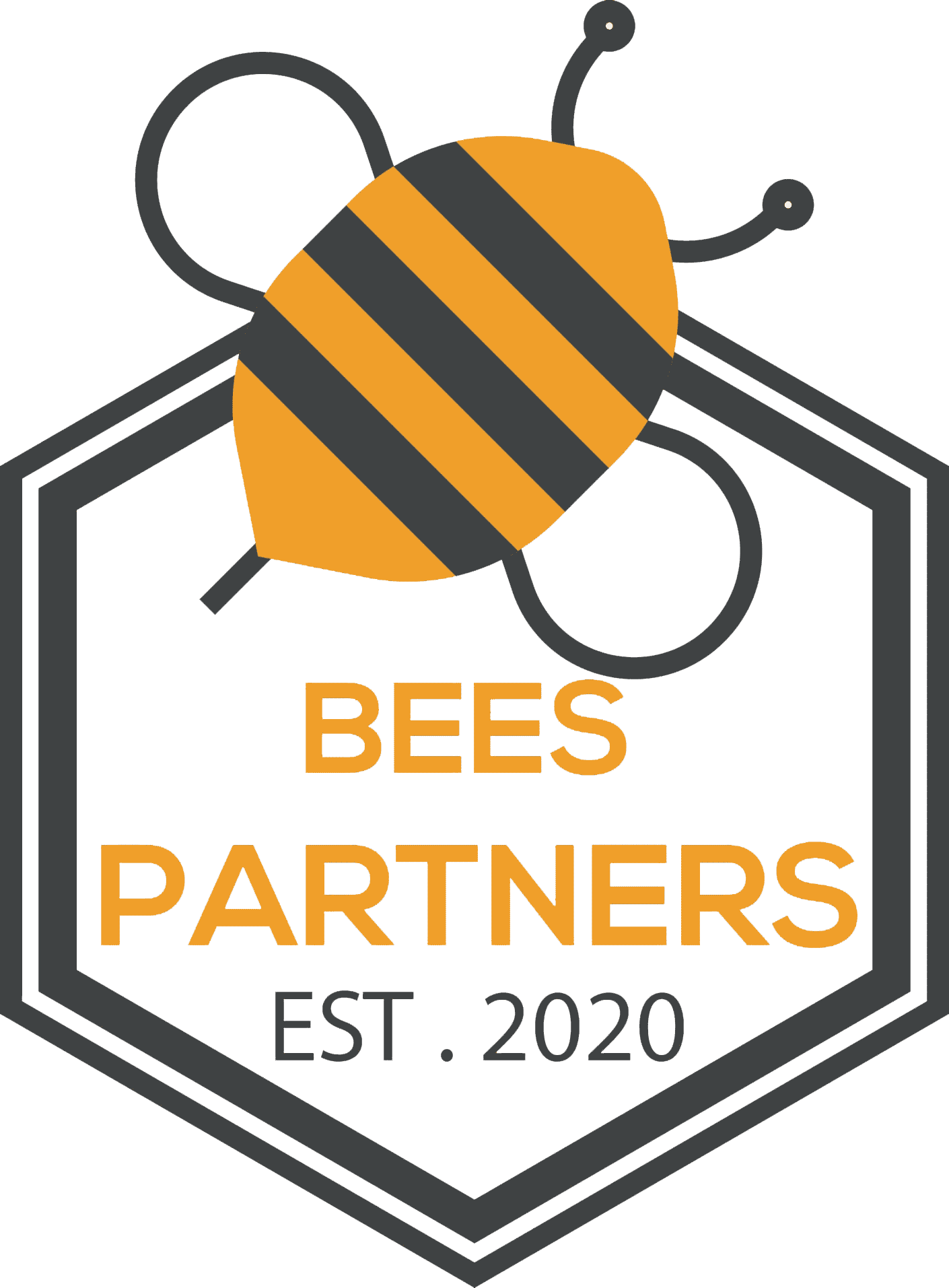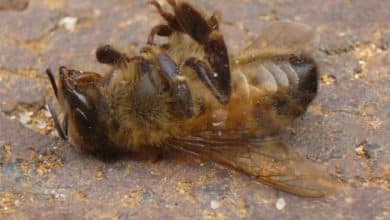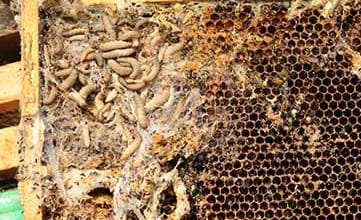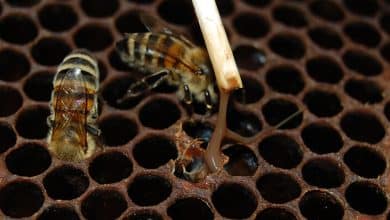honey bee treatment

Honey bee treatment plays a crucial role in maintaining the health and well-being of bee colonies. As honey bees face various threats, including diseases, pests, and environmental challenges, it becomes essential to implement effective treatment methods.
Treatment options for honey bees can be categorized into natural remedies and chemical treatments. Natural bee medications utilize organic substances, such as essential oils, organic acids, and herbal extracts, to combat diseases and pests. These natural treatments provide a safer and more sustainable approach, minimizing the risk of chemical residues in honey and beeswax.
Chemical bee treatments, on the other hand, involve the use of synthetic pesticides and miticides to control pests and diseases. While chemical options can be highly effective, they come with potential risks, including the development of resistance in pests and the potential for adverse effects on honey bees and other beneficial insects.
Integrated Pest Management (IPM) is a holistic approach that combines various bee treatment methods to maintain hive health. IPM emphasizes the integration of cultural, biological, and chemical controls, ensuring the least possible impact on honey bee colonies and the environment.
Maintaining proper hive hygiene and applying regular preventive measures are also essential for disease prevention. Keeping the hive clean, removing dead bees, and regularly inspecting for signs of disease can significantly contribute to hive health.
In conclusion, honey bee treatment is vital to protect honey bee colonies from diseases, pests, and environmental challenges. By considering different treatment options, beekeepers can effectively manage and maintain the health of their hives for the benefit of both the bees and the environment.
Overview of honey bee treatment methods
Honey bee treatment methods encompass a variety of approaches to maintain the health and wellbeing of bee colonies. These methods can be categorized into natural remedies and chemical treatments.
Natural bee medications utilize organic substances such as essential oils, organic acids, and herbal extracts to combat diseases and pests. They provide a safer and more sustainable approach, minimizing the risk of chemical residues in honey and beeswax. Some common natural treatments for honey bee diseases include:
- Oregano oil: Known for its antimicrobial properties, oregano oil can help control bacterial infections in honey bees.
- Thymol: Derived from thyme, thymol is effective against varroa mites and tracheal mites, common pests in honey bee colonies.
- Formic acid: This organic acid is used to treat varroa mites and is particularly effective when applied during the late summer or fall.
In addition to natural treatments, beekeepers may also employ chemical bee treatments. These treatments involve the use of synthetic pesticides and miticides to control pests and diseases. Chemical options can be highly effective, but they come with potential risks, including the development of resistance in pests and the potential for adverse effects on honey bees and other beneficial insects. Beekeepers need to be cautious when using chemical treatments, following label instructions and considering the impact on colony health and the environment.
Integrated Pest Management (IPM) is a holistic approach that combines various treatment methods to maintain hive health. It emphasizes the integration of cultural, biological, and chemical controls, ensuring the least possible impact on honey bee colonies and the environment. By implementing a combination of treatment methods and maintaining proper hive hygiene, beekeepers can effectively manage and preserve the health of their hives for the benefit of both the bees and the environment.
Importance of honey bee treatment for hive health
Maintaining the health of honey bee hives is essential for the survival and productivity of the colony. Honey bees face numerous threats from diseases, pests, and environmental stressors that can weaken and even destroy a hive if left untreated. Therefore, honey bee treatment plays a vital role in preserving hive health and ensuring the overall well-being of the bees.
Effective honey bee treatment helps in preventing the spread of diseases and controlling the population of destructive pests such as varroa mites, small hive beetles, and wax moths. By implementing appropriate treatment methods, beekeepers can reduce the likelihood of disease outbreaks and infestations, which can otherwise lead to significant losses in bee populations.
Furthermore, treating honey bee hives promotes the overall strength and productivity of the colony. Healthy bees are more efficient in pollinating plants, resulting in increased crop yields and improved biodiversity. Treating for pests and diseases also ensures the longevity of the hive, allowing it to thrive and produce honey and other hive products.
In addition to supporting hive health, honey bee treatment is crucial for the sustainability of the beekeeping industry. Bees play a critical role in pollinating crops, contributing to food production and ecosystem balance. Without proper treatment and management, the bee population can decline, negatively impacting agriculture and the environment.
Overall, honey bee treatment is essential for maintaining the health, productivity, and sustainability of honey bee hives. By recognizing the importance of treatment methods and implementing them effectively, beekeepers can ensure the well-being of their colonies and contribute to the conservation of honey bees and their vital role in our ecosystems.
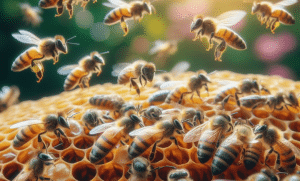
Contents
Natural Bee Medications
Natural bee medications, derived from natural sources such as plants and microbes, are commonly used in beekeeping as alternative treatments for honey bee diseases. These medications offer a more organic and sustainable approach to hive health management. Here are some common natural treatments for honey bee diseases:
- Essential Oils: Essential oils extracted from plants like thyme, lemongrass, and eucalyptus have antimicrobial properties that can help combat bacterial and fungal infections in honey bee hives. They can be applied to the hive in various ways, including fumigation, feeding, or through incorporated strips.
- Organic Acids: Organic acids, such as formic acid and oxalic acid, are effective against varroa mites, one of the biggest pests affecting honey bee colonies. These acids can be used through fumigation or vaporization methods, targeting the mites while avoiding harm to the bees.
- Probiotics: Probiotics are beneficial bacteria that can enhance honey bee health by promoting a balanced gut microbiome. They can be administered through pollen patties or added to sugar syrup for feeding.
- Plant Extracts: Extracts from plants like neem, propolis, and chrysanthemum have shown potential for their antimicrobial and insecticidal properties. These extracts can be incorporated into sugar syrup or used as sprays to control pests and diseases.
While natural bee medications are generally considered safer for honey bees and the environment, it is important to follow proper dosage and application techniques to avoid any unintended harm. Additionally, it is recommended to consult with local experts or beekeeping associations to ensure the appropriate use of these medications for specific diseases and pests.
By incorporating natural bee medications into hive management practices, beekeepers can provide effective disease control and promote the overall well-being of their honey bee colonies.
Common natural treatments for honey bee diseases
There are several common natural treatments available for honey bee diseases that beekeepers can incorporate into their hive management practices. These treatments, derived from natural sources such as plants and microbes, offer a more organic and sustainable approach to hive health.
One popular option is the use of essential oils. Essential oils extracted from plants like thyme, lemongrass, and eucalyptus have antimicrobial properties that can help combat bacterial and fungal infections in honey bee hives. They can be applied to the hive through methods such as fumigation, feeding, or incorporated into strips.
Organic acids, such as formic acid and oxalic acid, are also effective against one of the biggest threats to honey bees – varroa mites. These acids can be used through fumigation or vaporization methods that specifically target the mites, while minimizing harm to the bees.
Probiotics, which are beneficial bacteria, can enhance honey bee health by promoting a balanced gut microbiome. These can be administered through pollen patties or added to sugar syrup for feeding, helping to maintain the overall health of the colony.
Plant extracts, such as neem, propolis, and chrysanthemum, have shown potential for their antimicrobial and insecticidal properties. These extracts can be incorporated into sugar syrup or used as sprays to control pests and diseases.
It is important for beekeepers to follow proper dosage and application techniques when using these natural treatments to avoid any unintended harm to the bees. Consulting with local experts or beekeeping associations can ensure the appropriate use of these medications for specific diseases and pests.
By incorporating natural treatments into their hive management practices, beekeepers can provide effective disease control and promote the overall well-being of their honey bee colonies.
Alternative remedies for varroa mites and other pests
There are several alternative remedies available for beekeepers to combat varroa mites and other pests in their honey bee hives. These remedies offer natural and sustainable options for pest control, reducing the reliance on chemical treatments.
One alternative method is the use of essential oils. Essential oils extracted from plants like thyme, lemongrass, and eucalyptus contain compounds that have insecticidal properties. These oils can be applied to the hive through fumigation or by using them in sugar syrup or pollen patties. However, it is important to note that essential oils should be used with caution and in the appropriate concentration, as they can also harm bees if not used correctly.
Another effective remedy is the use of powdered sugar dusting. Dusting the hive with powdered sugar can dislodge and trap varroa mites, causing them to fall through the screened bottom board. This method is a non-chemical approach and has been found to be effective in reducing varroa mite populations in the hive.
Additionally, diatomaceous earth can be used as a natural pest control option. Diatomaceous earth is a naturally occurring sedimentary rock that is made up of the fossilized remains of diatoms. It can be sprinkled around the hive and on the bottom board to control pests by causing dehydration and damage to their exoskeletons.
Furthermore, screened bottom boards can be installed in the hive to help control varroa mites and improve hive ventilation. The mites are known to fall through the screen and not be able to climb back up, leading to their eventual demise. This method allows for a more natural approach to varroa mite control.
It is important for beekeepers to research and understand the proper usage and dosage requirements when implementing alternative remedies. Each remedy should be used in conjunction with good hive management practices to ensure the health and well-being of the honey bee colony.
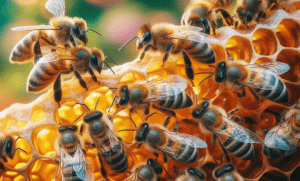
Chemical Bee Treatments
Chemical bee treatments are another option for honey bee treatment. These treatments involve the use of synthetic chemicals to control and eliminate pests and diseases in bee colonies. While these chemical treatments can be effective in managing honey bee health, it is important to consider their potential risks and side effects.
One common chemical treatment for varroa mites is Sucrocide® (sucrose octanoate). It has been found to be moderately to highly effective in reducing mite populations in beehives. Another chemical treatment option is Mite-Away II® which contains formic acid. This treatment has shown high efficacy in killing mites but may also have negative effects on honey bee health if not used correctly.
Apistan® is another chemical option used to control varroa mites. It contains fluvalinate, which has been proven to be highly effective in killing mites. However, prolonged use can lead to resistance in mites, making the treatment less effective over time. CheckMite+® is another chemical treatment choice that contains coumaphos. It has also been found to be highly effective in managing mite populations, but like Apistan®, prolonged use can lead to resistance.
When using chemical treatments, it is crucial to follow the manufacturer’s instructions and dosage recommendations. It is also important to consider potential risks and side effects. Some chemical treatments can leave residues in hive products, such as wax, which may affect the quality and safety of honey and other hive products. Additionally, the prolonged use of certain chemicals can lead to resistance in pests, making them less effective in the long run.
Overall, chemical treatments can be a useful tool in managing honey bee health, but they should be used judiciously and as part of an integrated pest management approach. It is important to weigh the potential risks and benefits of chemical treatments and consider alternative options whenever possible.
Chemical options for honey bee treatment
Chemical options for honey bee treatment are another approach to managing pests and diseases in bee colonies. These treatments involve the use of synthetic chemicals that are specifically designed to target and eliminate unwanted pests, such as varroa mites. While chemical treatments can be highly effective in reducing pest populations, it is important to carefully consider their potential risks and side effects.
One common chemical treatment for varroa mites is Sucrocide® (sucrose octanoate). This chemical has been found to be moderately to highly effective in reducing mite populations in beehives. Another option is Mite-Away II® which contains formic acid. This treatment has shown high efficacy in killing mites, but it is important to use it correctly to minimize potential negative effects on honey bee health.
Apistan® is another chemical option used specifically for controlling varroa mites. It contains fluvalinate, a highly effective ingredient in killing mites. However, prolonged use of Apistan® can lead to resistance in mites, making the treatment less effective over time. Similarly, CheckMite+® contains coumaphos which has also been found to be highly effective in managing mite populations. However, prolonged use of CheckMite+® can lead to resistance.
When using chemical treatments, it is crucial to follow the manufacturer’s instructions and dosage recommendations. It is also important to be aware that some chemical treatments can leave residues in hive products, such as wax, which may affect the quality and safety of honey and other hive products. Additionally, prolonged use of certain chemicals can lead to resistance in pests, making them less effective in the long run.
In conclusion, chemical options can be a useful tool in managing honey bee health, but they should be used cautiously and as part of an integrated pest management approach. It is important to carefully weigh the potential risks and benefits of chemical treatments and consider alternative options whenever possible.
Effectiveness and potential risks associated with chemical treatments
Chemical treatments can be highly effective in managing pests and diseases in honey bee colonies. They are specifically formulated to target and eliminate unwanted pests, such as varroa mites, which can severely impact the health of the hive. These treatments have been successful in reducing pest populations and protecting honey bee colonies from further damage.
One commonly used chemical treatment for varroa mites is Sucrocide® (sucrose octanoate), which has been found to be moderately to highly effective in reducing mite populations in beehives. Another option is Mite-Away II® which contains formic acid and has shown high efficacy in killing mites. Other treatments, such as Apistan® and CheckMite+®, use fluvalinate and coumaphos respectively, and are also effective in managing mite populations.
However, it is important to carefully consider the potential risks associated with chemical treatments. The prolonged use of these chemicals can lead to the development of resistance in pests, making the treatment less effective over time. Additionally, some chemical treatments can leave residues in hive products, such as wax, which may affect the quality and safety of honey and other hive products. It is crucial to follow the manufacturer’s instructions and dosage recommendations to avoid any negative effects on honey bee health.
To mitigate the risks associated with chemical treatments, it is advisable to use them as part of an integrated pest management approach. This involves combining different methods, such as natural treatments and proper hive hygiene practices, to minimize the reliance on chemical treatments and maintain the long-term health and sustainability of honey bee colonies.
In conclusion, chemical treatments can be an effective tool in managing honey bee health, but they should be used cautiously and in conjunction with other methods. Carefully considering the potential risks and implementing proper safety measures will ensure the well-being of both the bees and the beekeeper.

Integrated Pest Management
Integrated Pest Management (IPM) is a comprehensive approach to controlling pests in honey bee colonies. It involves the strategic use of various methods to prevent and manage pest infestations while minimizing the reliance on chemical treatments. The goal of IPM is to achieve long-term pest control that is safe, effective, and environmentally sustainable.
One of the key principles of IPM is to understand and monitor pest populations to determine the best course of action. This can involve regular hive inspections to assess the health of the colony and identify any signs of pests or diseases. By monitoring pest levels, beekeepers can take proactive measures to prevent pests from reaching damaging levels.
Another important aspect of IPM is the use of cultural and physical control methods. These include practices such as maintaining clean and properly ventilated hives, using sturdy and well-maintained equipment, and implementing proper hive hygiene practices. These measures can reduce the risk of pest infestations and help maintain the overall health of the colony.
In addition to cultural and physical controls, IPM also encourages the use of biological control methods. This involves introducing natural predators or parasites that can help control pest populations. For example, beekeepers may introduce beneficial insects or mites that specifically target pests like varroa mites.
Chemical treatments are also a part of IPM, but they are used as a last resort and in a targeted manner. When chemical treatments are necessary, beekeepers should follow proper dosage recommendations and safety precautions to minimize the risk of negative effects on honey bee health and hive products.
By combining these different methods, beekeepers can develop a holistic approach to honey bee treatment that maximizes effectiveness and minimizes the potential risks associated with pest infestations. With proper implementation of IPM, beekeepers can successfully manage pests in their honey bee colonies while maintaining the long-term health and sustainability of their hives.
Understanding the principles of integrated pest management
Integrated Pest Management (IPM) is a comprehensive approach to controlling pests in honey bee colonies. It involves the strategic use of various methods to prevent and manage pest infestations while minimizing the reliance on chemical treatments. The goal of IPM is to achieve long-term pest control that is safe, effective, and environmentally sustainable.
One of the key principles of IPM is to understand and monitor pest populations to determine the best course of action. This can involve regular hive inspections to assess the health of the colony and identify any signs of pests or diseases. By monitoring pest levels, beekeepers can take proactive measures to prevent pests from reaching damaging levels.
Another important aspect of IPM is the use of cultural and physical control methods. These include practices such as maintaining clean and properly ventilated hives, using sturdy and well-maintained equipment, and implementing proper hive hygiene practices. These measures can reduce the risk of pest infestations and help maintain the overall health of the colony.
In addition to cultural and physical controls, IPM also encourages the use of biological control methods. This involves introducing natural predators or parasites that can help control pest populations. For example, beekeepers may introduce beneficial insects or mites that specifically target pests like varroa mites.
Chemical treatments are also a part of IPM, but they are used as a last resort and in a targeted manner. When chemical treatments are necessary, beekeepers should follow proper dosage recommendations and safety precautions to minimize the risk of negative effects on honey bee health and hive products.
By combining these different methods, beekeepers can develop a holistic approach to honey bee treatment that maximizes effectiveness and minimizes the potential risks associated with pest infestations. With proper implementation of IPM, beekeepers can successfully manage pests in their honey bee colonies while maintaining the long-term health and sustainability of their hives.
Using a combination of methods for honey bee treatment
Honey bee treatment often requires a multifaceted approach to effectively manage pests and diseases in the colony. Beekeepers have found that using a combination of methods can provide better results and reduce the risk of developing resistance to specific treatments.
By utilizing a variety of techniques, beekeepers can target pests and diseases at multiple stages of their lifecycle, increasing the chances of success. For example, cultural controls such as maintaining clean hives and good hive hygiene practices can help prevent pest infestations. These practices create an unfavorable environment for pests and reduce their ability to reproduce and spread.
Additionally, biological controls can be introduced to the hive to help manage pest populations. Natural predators or parasites can be used to target specific pests, such as introducing beneficial insects or mites that specifically prey on varroa mites. This biological control method can help reduce the reliance on chemical treatments and minimize the risk of negative effects on honey bee health.
Chemical treatments can still be a valuable tool in honey bee treatment, but they should be used judiciously and as a last resort. By combining chemical treatments with other methods, such as cultural controls and biological controls, beekeepers can minimize the amount of chemicals needed, reducing the potential risks to honey bees and their hive products.
It is important for beekeepers to regularly monitor their colonies and assess the effectiveness of the different treatment methods being employed. This allows for adjustments to be made as necessary to achieve optimal pest control.
In conclusion, integrating multiple approaches to honey bee treatment can provide more effective and sustainable pest management. By using a combination of cultural controls, biological controls, and targeted chemical treatments, beekeepers can maintain the health and longevity of their honey bee colonies while minimizing the impact on honey bee health and hive products.
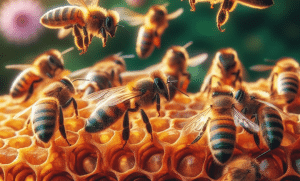
Hive Hygiene and Maintenance
Proper hive hygiene and maintenance are essential for the overall health and well-being of honey bee colonies. By implementing good hygiene practices and regularly maintaining their hives, beekeepers can prevent the spread of diseases and pests, ensuring the longevity and productivity of their bees.
One important step in hive hygiene is to regularly clean and sanitize the hive equipment. This involves removing beeswax scraps, old combs, and dead-out colonies, as these can attract and harbor pests and diseases. By keeping the hive environment clean and free from debris, beekeepers can create a more favorable living environment for their bees, reducing the risk of disease transmission.
Regular inspections of the hive are also crucial for maintaining hive health. Beekeepers should regularly check for signs of disease, such as abnormal brood patterns or unusual behavior from the bees. Identifying and addressing potential issues early on can help prevent the spread of diseases and enable prompt treatment, if necessary.
In addition to cleaning and inspections, beekeepers should also practice good management techniques to promote hive hygiene. This includes maintaining proper ventilation within the hive to prevent condensation and mold growth, as well as ensuring an adequate food supply for the bees. Providing a balanced and nutritious diet for the bees can help boost their immune systems and make them more resilient to diseases.
By implementing these hive hygiene practices and regularly maintaining their hives, beekeepers can create a healthier and more productive environment for their honey bees. This not only benefits the bees themselves but also improves the quality and quantity of honey and other hive products. Ultimately, proper hive hygiene and maintenance are vital for the success and sustainability of honey bee colonies.
Proper hive management practices for disease prevention
Proper hive management practices are crucial for preventing diseases in honey bee colonies. By implementing effective management techniques, beekeepers can create a healthy and thriving environment for their bees, reducing the risk of diseases and ensuring the longevity of the colony.
One important aspect of hive management is maintaining a strong and productive hive. This includes regularly monitoring the hive population and assessing the overall health of the bees. Beekeepers should regularly inspect the brood patterns, looking for any signs of disease or abnormalities. By identifying and addressing potential issues early on, beekeepers can prevent the spread of diseases and take appropriate measures for treatment.
Another key factor in disease prevention is providing a balanced and nutritious diet for the bees. Bees need a diverse range of pollen and nectar sources to maintain their immune systems. Beekeepers can plant a variety of flowers and plants that bloom throughout the year, ensuring a steady food supply for the bees. Additionally, beekeepers can supplement the bees’ diet with pollen patties or sugar syrup during times of scarcity.
Proper hive hygiene is also essential for disease prevention. Beekeepers should regularly remove debris, such as dead bees or wax scraps, from the hive. This helps to eliminate potential breeding grounds for pests and pathogens. Additionally, beekeepers should ensure proper ventilation within the hive to prevent condensation and mold growth.
Lastly, beekeepers should implement effective pest management strategies to prevent the infestation of pests such as varroa mites. Regularly monitoring for pests and taking appropriate measures for treatment can help prevent the spread of diseases.
By following these proper hive management practices, beekeepers can significantly reduce the risk of diseases in their honey bee colonies. This promotes the overall health and productivity of the bees, ultimately contributing to the success and sustainability of the colony.
Cleaning and sanitization techniques for hive health
Keeping a clean and sanitary hive is essential for maintaining the health and well-being of honey bees. Proper cleaning and sanitization techniques can help prevent the spread of diseases and pests, ensuring a thriving and productive hive.
Here are some important cleaning and sanitization techniques for hive health:
- Regular Hive Inspections: Beekeepers should conduct regular inspections of their hives to check for any signs of disease or pest infestation. This includes inspecting frames, bottom boards, and other hive components for debris, mold, or any other signs of contamination.
- Removal of Debris: Dead bees, old wax, and other debris should be regularly cleaned out of the hive. This helps eliminate potential breeding grounds for pests and pathogens.
- Frame Rotation: Beekeepers should practice frame rotation by periodically removing old frames and replacing them with fresh ones. This prevents the buildup of pathogens and maintains a clean and healthy brood chamber.
- Equipment Sterilization: Tools and equipment used in hive management should be sterilized between hive inspections. This can be done by soaking them in a bleach solution or using a flame to kill any potential pathogens.
- Hygienic Bee Breeding: Breeding bees with innate hygienic behavior can help control the spread of diseases within the hive. These bees have a better ability to detect and remove diseased or dead brood, reducing the risk of disease transmission.
- Natural Sanitizers: Some beekeepers use natural sanitizers such as vinegar or essential oils to wipe down hive components. These substances can help kill harmful pathogens while being safe for the bees.
By implementing these cleaning and sanitization techniques, beekeepers can create a clean and healthy environment for their bees. This reduces the risk of disease and promotes overall hive health and productivity. Remember to always follow proper safety protocols and guidelines when handling hive components and cleaning agents.
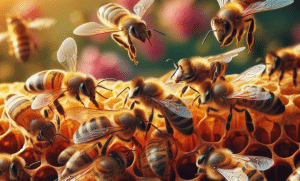
Conclusion honey bee treatment
In conclusion, honey bee treatment is a crucial aspect of hive health management. The well-being and productivity of honey bee colonies depend on the effective control of pests and diseases. By implementing various treatment methods, beekeepers can ensure the longevity and vitality of their hives.
Natural bee medications offer alternative remedies for honey bee diseases. These treatments, such as essential oils and natural acids, can help control diseases like American foulbrood and European foulbrood. Additionally, alternative remedies for varroa mites, a common pest in honey bee colonies, can reduce the reliance on chemical treatments.
Chemical bee treatments also play a role in honey bee treatment. These options, including synthetic acaricides and antibiotics, provide effective control for varroa mites and certain diseases. However, it is crucial for beekeepers to carefully consider the potential risks and impacts associated with chemical treatments.
Integrated pest management (IPM) is a comprehensive approach that combines various treatment methods to minimize pests and diseases. Understanding the principles of IPM and implementing a combination of treatments can enhance the effectiveness and sustainability of honey bee treatment.
Moreover, proper hive hygiene and maintenance practices, such as regular inspections, debris removal, and equipment sterilization, are essential for preventing the spread of diseases and maintaining a clean and healthy hive environment.
In selecting the most suitable treatment method, beekeepers should consider the specific needs of their colonies, prevailing pests and diseases in their region, and the potential impacts on honey bee health and surrounding ecosystems.
In summary, honey bee treatment requires a comprehensive approach that integrates natural remedies, chemical treatments, and good hive management practices. By considering all available options and implementing appropriate treatment methods, beekeepers can promote the well-being and long-term survival of their honey bee colonies.
Summary of different honey bee treatment options
Honey bee treatment involves a range of methods to manage pests and diseases in hives. Understanding the different treatment options is crucial for beekeepers to ensure the health and productivity of their colonies.
Natural bee medications offer alternative remedies for honey bee diseases. These treatments, such as essential oils and natural acids, can effectively control diseases like American foulbrood and European foulbrood. They provide a more sustainable and environmentally friendly approach to treatment.
Chemical bee treatments also play a role in honey bee treatment. Synthetic acaricides and antibiotics offer effective control for pests like varroa mites and certain diseases. However, it is important for beekeepers to consider the potential risks and impacts associated with chemical treatments. Careful application and proper dosage are crucial to minimize negative effects.
Integrated pest management (IPM) is a comprehensive approach that combines various treatment methods. By utilizing a combination of cultural, mechanical, and chemical practices, beekeepers can minimize pests and diseases while reducing reliance on chemicals. Regular monitoring and rotation of treatments are essential for effective management and prevention of resistance.
Proper hive hygiene and maintenance practices are also crucial for disease prevention. Regular inspections, debris removal, and equipment sterilization help maintain a clean and healthy hive environment.
When selecting the most suitable treatment method, beekeepers should consider the specific needs of their colonies, prevalent pests and diseases in their region, and potential impacts on honey bee health and surrounding ecosystems.
Overall, a well-rounded approach that integrates natural remedies, chemical treatments, and good hive management practices is key to ensuring the well-being and longevity of honey bee colonies.
Tips for selecting the most suitable treatment method
When it comes to selecting the most suitable treatment method for honey bees, beekeepers need to consider a few important factors. Here are some tips to help you make an informed decision:
- Identify the specific needs of your colonies: Each hive may have different requirements and susceptibilities to pests and diseases. Conduct regular inspections and monitor the health of your bees to determine their specific needs.
- Research prevalent pests and diseases in your region: Different regions may have different pest and disease challenges. Stay informed about the common issues in your area and choose treatments that target those specific challenges.
- Assess the potential risks and impacts: Consider the potential risks and impacts associated with the treatment method. Some chemical treatments may have harmful effects on honey bees or the environment. Balance the effectiveness of the treatment with its potential risks.
- Consider the sustainability and environmental impact: Look for treatment options that are more sustainable and environmentally friendly. Natural remedies and integrated pest management techniques can provide effective control while minimizing negative impacts.
- Consult with experienced beekeepers and professionals: Seek advice from experienced beekeepers or consult with beekeeping professionals. They can provide valuable insights and recommendations based on their own experiences and knowledge.
- Keep up with current research and advancements: Stay updated on the latest research and advancements in honey bee treatment methods. New techniques and treatments may offer more effective and safer alternatives.
Remember, there is no one-size-fits-all solution for honey bee treatment. It may require some trial and error to find the most suitable method for your specific circumstances. By considering these tips and staying proactive in your hive management, you can ensure the health and vitality of your honey bee colonies.
As we reach the end of our detailed discussion on honey bee treatments, it’s evident that a multifaceted approach is key to maintaining a healthy bee population. This insightful information is made possible through invaluable research supported by various agricultural and environmental institutions, ensuring that we have access to, and can put into practice, the best options for our precious pollinators.
Let’s safeguard the bees that play a crucial role in our ecosystem. I encourage you to share your experiences, insights, or questions regarding today’s topic. Together, we can create a thriving environment for our buzzing friends and contribute to a sustainable future. Thank you for investing your time in learning about advanced strategies for honey bee treatment and well-being. Your input is not only welcomed; it’s necessary for us to grow and learn as a community dedicated to the welfare of honey bees. Join the conversation now and be part of the solution for a healthier bee population!
Important Notice on Content Rights
All rights reserved to Bees Partners © 2025. Copying, republishing, translating, or quoting more than 10% of this content is prohibited without prior written permission. For commercial or academic use, please contact: info@beespartners.dk.
Note: Limited quotation is allowed with clear source attribution and a direct link to the original article.
